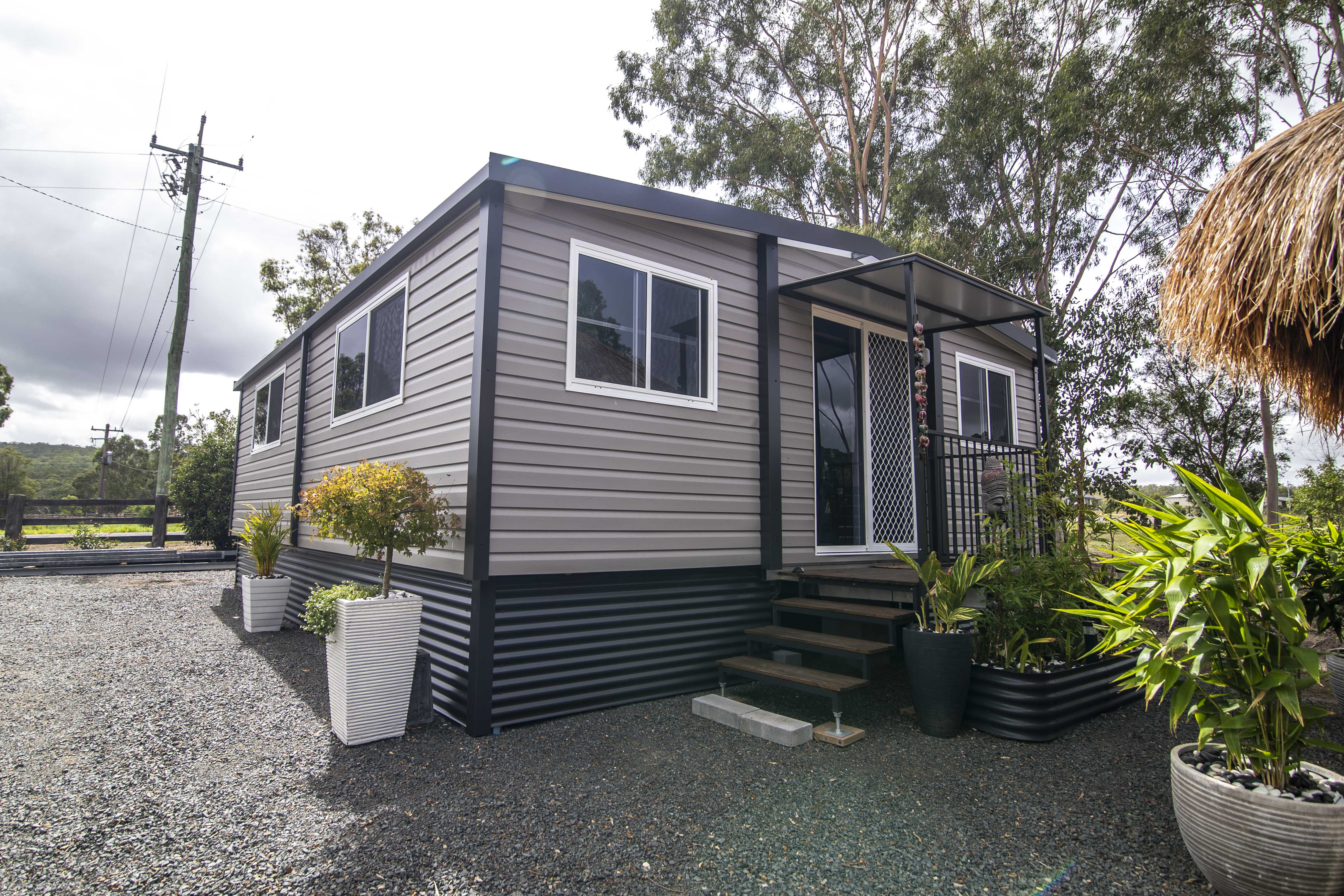
Looking to add a second dwelling — without the stress? With so many options available in Australia today, it’s important to know what you’re really getting. We’ve taken a close look at three common alternatives: VanHomes, granny flats and container homes — to help you make the best choice for your needs.

Flexibility & Relocatable Freedom
VanHomes are legally registerable caravans, meaning they’re designed to be towed directly to your site without the need for dismantling or complex logistics. In most cases they can be driven straight into position. For properties with limited access, a crane can be used as an alternative to safely lift and place the VanHome where needed.
Unlike VanHomes, granny flats are permanently fixed structures that can't be relocated, while container homes often require cranes and heavy transport for every move, making them less flexible overall.

Approvals & Compliance
This is where VanHomes really stand out in NSW. Because they’re legally registerable caravans, VanHomes do not require council building approval when placed on private land with an existing dwelling and a member of the current household resides in the VanHome — as outlined in Section 77 of Subdivision 3 the NSW state-wide legislation relating to Manufactured Home Estates, Caravan Parks, Camping Grounds and Moveable Dwellings. This offers a clear, streamlined setup process. Traditional Granny flats require full DA approvals. Container homes are typically mass-produced overseas — often in China — and rarely meet Australian standards for insulation, compliance, or liveability.
.jpg?width=667&height=500&name=D136_842D_%20(3).jpg)
Liveable Space & Comfort
VanHomes range in size from 9sqm to 59sqm, offering some of the most generous and flexible layouts in the relocatable granny flat market. Every VanHome comes fully equipped with a self-sufficient kitchen, bathroom and living space.
Granny flats can also offer ample space but require significant construction time and approvals. Container homes, although technically liveable, are limited by their shipping dimensions and often require multiple modifications after installation to ensure their liveability. In most cases, they also do not meet Australian living standards, making them risky for long-term housing.
-1.jpg?width=667&height=500&name=721_Display%20(2)-1.jpg)
Durability & Ongoing Maintenance
VanHomes are proudly designed and built in our 9,400sqm manufacturing facility in Berkeley Vale, NSW, to meet Australian caravan standards and offer exceptional durability. We focus on quality craftsmanship to ensure that each VanHome is built to last in Australian conditions. Granny flats offer a good long-term performance but may require more maintenance due to their permanent nature, VanHomes are often a more low-maintenance solution. Container homes, often mass-produced overseas, often can suffer from rust, leaks, and other issues when exposed to Australian weather.
-1.jpg?width=667&height=500&name=AE070_1062_Geuri%20(1)-1.jpg)
Value for Money
VanHomes offer incredible value — especially when you factor in their standard inclusions, quick setup, and compliance benefits in NSW. Granny flats will generally cost more, and council approvals can drag out the process. And whilst container homes are often the cheapest to buy, they tend to be the costliest to convert, certify, and maintain — making them a classic case of “you get what you pay for.”
.jpg?width=667&height=500&name=Copper%20Creek%20Estate%20(2).jpg)
In Conclusion
Choosing a secondary dwelling is a big decision — and VanHomes takes the stress out of it. With their moveability, comfort, affordability, and compliance in NSW, it’s no wonder thousands of Australians are turning to VanHomes as the better way forward. Start your VanHomes journey today and join thousands of Aussies in a new wave of affordable housing solutions.
